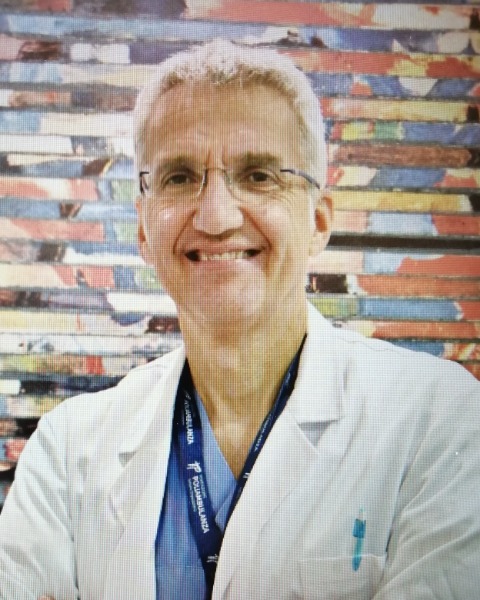Global Neonatal & Children's Health
Global Neonatal & Children's Health 4
556 - Implementation of the Bubble CPAP in a Low-resource setting Neonatal Unit: technology is not enough.
Publication Number: 556.41

Paolo Ernesto Villani (he/him/his)
Head NICU Poliambulanza Foundation
NICU, Women & Children Health DP, Poliambulanza Foundation Hospital Brescia, Italy
Brescia, Lombardia, Italy
Presenting Author(s)
Background: Worldwide, preterm birth accounts for 36·1% of neonatal deaths and 17·7% of deaths among children younger than 5 years. Implementation of the bubble-CPAP to reduce mortality and morbidity in low-resource settings is included among the new WHO recommendations for the care of preterm or low birth weight infants. (1)
Objective:
Here, we present our experience before and after the introduction of the bubble CPAP at the Saint Camille Hospital Ouagadougou (HOSCO), Burkina Faso.
Design/Methods:
The HOSCO is the only referral hospital for sick neonates in Ouagadougou city. About 2000 neonates (80% outborn) are admitted to the neonatal unit every year. Since 2019, 7 bubble CPAP machines have been progressively introduced for the care of neonates with respiratory distress. Staff education was provided by 2 expert neonatologists. This is a retrospective analysis comparing the mortality rates before ("pre-intervention" period - 2016-2018) and after ("post-intervention" period - 2019-2020) the introduction of the bubble CPAP at the neonatal unit of HOSCO.
Results:
After its introduction in 2019, CPAP was administered to 12% of admitted neonates in 2019-2020 (Table). Of them, 84% of were < 1500 grams, 6% were 1500-2500 grams, and 10% were >2500 grams. Mortality was 90% overall, and by birth weight: 90% (< 1500 grams), 91% (1500-2500 grams), and 88% ( >2500 grams). Mortality rate was not statistically different before (2016-2018) and after (2019-2020) the bubble CPAP introduction in all neonates overall (40% vs. 40%, p=0.95), and by birth weight: 62% vs. 64% in < 1500 grams (p=0.36), 23% vs. 26% in 1500-2500 grams (p=0.31), and 18% vs. 18% in >2500 grams (p=0.92).
Conclusion(s):
After the implementation of the bubble CPAP in a large neonatal care unit in a low-resource setting, the mortality rate remained very high (around 90%) among the treated infants regardless of the birthweight category. Our findings suggest that other factors, such as continuous staff education, workload and patient selection, should be considered along with the implementation of new lifesaving technology in a low-resource setting..jpg)
